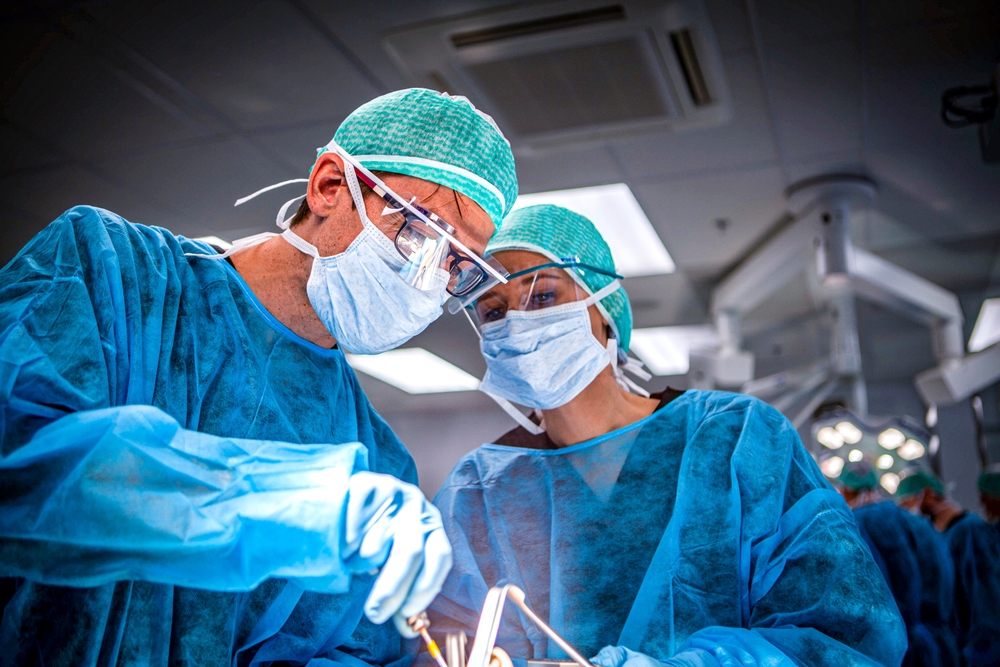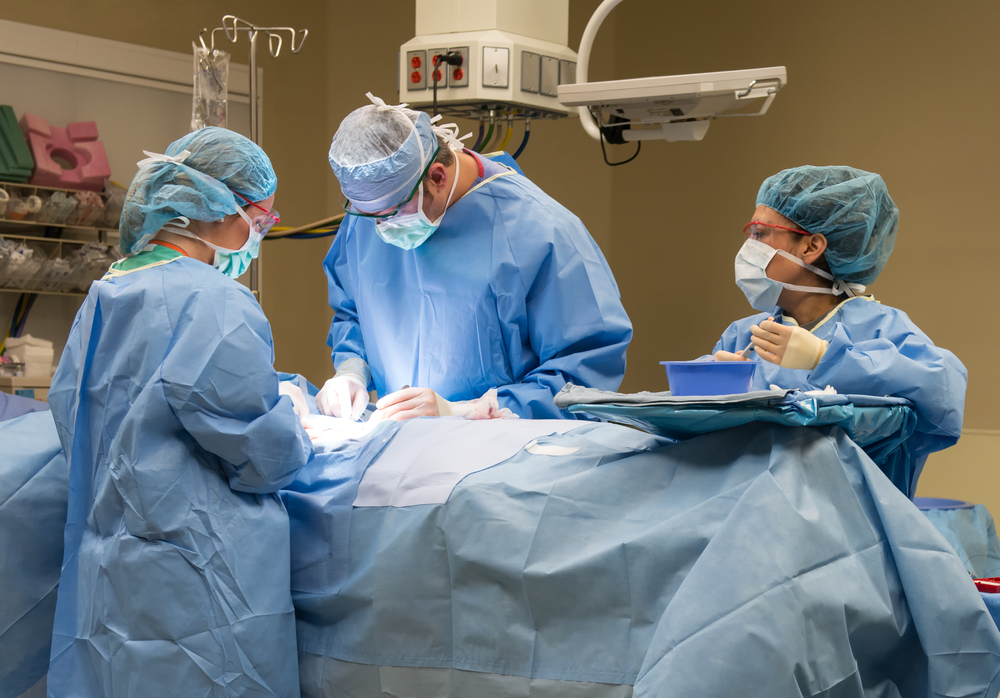A Surgeon in Rome Just Operated Remotely on a Patient in Bejing

Imagine a world where the most skilled surgeon on the planet can operate on you without ever boarding a plane — not even stepping into the same time zone. Where geographical distance is no longer a barrier to life-saving expertise, and a scalpel can be guided across continents with the precision of a hand just inches away.
That future arrived quietly but decisively in June 2024, when a Chinese surgeon, seated in a medical facility in Rome, performed a robotic prostatectomy on a patient lying in an operating room in Beijing — more than 8,000 kilometers away. No delays. No room for error. Just a steady, real-time choreography between man and machine.
Once a fixture of science fiction or speculative medicine, this kind of transcontinental telesurgery is now a functioning reality — not just a proof of concept, but a live-streamed operation watched by global experts as it unfolded. And it may redefine what it means to deliver care in a connected world.
A Historic Leap in Medicine
On the surface, it was a standard radical prostatectomy — the surgical removal of cancerous tissue from the prostate. But what set this operation apart was the 8,000 kilometers that separated the surgeon from the patient. Dr. Zhang Xu, a leading urologist at the People’s Liberation Army (PLA) General Hospital in China, performed the procedure from Rome, while the patient lay on an operating table in Beijing. This marked the world’s first successful transcontinental remote robotic surgery, a milestone that has redefined the boundaries of modern medicine.
The concept of telesurgery isn’t new — the first telerobotic operation took place in 2001 — but until now, physical distance and communication delays had limited its practical application. This particular operation crossed a total two-way data transmission distance of over 20,000 kilometers. That scale presented extraordinary technical challenges, yet the procedure was executed with remarkable precision. Thanks to China’s advanced 5G infrastructure and fiber-optic communication systems, latency was reduced to just 135 milliseconds — significantly below the 200-millisecond threshold considered safe for robotic-assisted surgery.

This achievement was more than a surgical success; it was a symbol of what’s now possible when technological infrastructure meets surgical innovation. The operation was broadcast live at the Challenges in Laparoscopy and Robotics & AI conference in Rome, drawing attention from global experts. Dr. Vito Pansadoro, a robotic surgery specialist and conference director, called it “a historical moment,” capturing the gravity of what had just been accomplished.
The implications go far beyond a single procedure. For the first time, the physical presence of a surgeon is no longer a requirement for life-saving care. What once required proximity now hinges on connectivity — a shift with potential to transform how, where, and by whom complex surgeries are performed.
The Technology Behind the Breakthrough
Surgeon in Rome performs remote robotic surgery on patient 8,000 km away in Beijing.
— Interesting STEM (@InterestingSTEM) June 2, 2025
pic.twitter.com/hhLbVDpE0k
Performing intricate surgery across continents is not just a matter of high-speed internet and robotic arms — it’s the product of a carefully orchestrated technological ecosystem designed to replicate the immediacy and precision of in-person operations. At the heart of this historic procedure was a cutting-edge surgical robot, customized by Chinese engineers, and a meticulously optimized 5G and fiber-optic communication network capable of transmitting data with near-zero delay.
Dr. Zhang Xu operated from a surgical console in Rome equipped with a high-definition 3D display and intuitive control interfaces. These consoles translate the surgeon’s hand movements into real-time commands, which are transmitted across the globe to the robotic arms in Beijing. These robotic instruments, stationed at the PLA General Hospital, mimicked Zhang’s actions with extraordinary accuracy, thanks to a latency of just 135 milliseconds — faster than the average human blink.

The backbone of this system was a robust, ultra-low-latency 5G network combined with fiber-optic links that provided the necessary bandwidth and speed to maintain continuous communication without disruptions. According to state broadcaster CCTV, this latency figure was critical — keeping the delay below the 200-millisecond mark that studies suggest is the upper limit for safe and effective telesurgery. Beyond signal speed, the system also incorporated “haptic feedback,” allowing Zhang to feel subtle resistance and pressure through the console, enhancing precision and control.
This type of robotic system builds on decades of innovation. One of the most well-known systems, the da Vinci Surgical System, was initially developed in the late 1990s and approved by the FDA in 2000. Designed with telesensors, multiple instrument arms, and a powerful visualization suite, da Vinci laid the foundation for today’s advanced telesurgical tools. While the Rome-Beijing surgery used a newer Chinese-built system, the principles remain rooted in this legacy: allow a surgeon to see, feel, and operate as if they were right next to the patient.
To prepare for this unprecedented feat, Zhang’s team conducted extensive trials — over a hundred preclinical surgeries on animals, simulated operations, and small-scale human trials. They also specifically tested the Rome-Beijing latency before attempting the live surgery. Every component, from network bandwidth to robotic calibration, had to be perfected to create a seamless, stable experience.
The Surgeon’s Journey: Practice, Precision, and Preparation
World's longest remote human surgery record set in China!
— Li Zexin (@XH_Lee23) November 26, 2024
Youness Ahallal is a French surgeon. He was in Shanghai while his patient was 12,000 km away in Morocco.
He has finished a prostate cancer surgery using a Chinese-made remote surgery robot.
This surgery set a new… pic.twitter.com/OGyOUqlnQz
Behind the dazzling technology and global headlines was a deeply human story of discipline, foresight, and relentless preparation. Dr. Zhang Xu, the surgeon at the center of this breakthrough, is not just a skilled operator of machines — he is a pioneer who has spent years methodically working toward the moment when remote surgery would no longer be a futuristic ambition, but a clinical reality.
Zhang serves as the director of urology at the People’s Liberation Army (PLA) General Hospital, one of China’s most advanced medical institutions. His role in this transcontinental surgery was not a leap of faith — it was the culmination of a carefully structured journey involving rigorous scientific protocols, military-level coordination, and an unwavering commitment to patient safety.
Before attempting the Rome-to-Beijing operation, Zhang and his team undertook more than a hundred experimental surgeries on animal models. These tests weren’t just about mastering robotic systems; they were about understanding how signal latency, robotic precision, and surgeon response times interact under different conditions. Every trial helped the team fine-tune both the surgical process and the network setup.

The team also conducted simulated operations using the exact Rome-Beijing configuration to assess delay, visual fidelity, and movement accuracy. These simulations revealed latency figures that gave them confidence — well under the 200-millisecond mark that researchers deem acceptable for remote control in high-stakes procedures.
Zhang’s dedication reflects the growing role of high-performance training in modern surgery, particularly when human lives depend on machine-assisted precision. But it’s not just technical readiness that defined his approach — it was strategic foresight. He made sure a full medical team and a backup surgeon were physically present in Beijing during the live procedure, ready to intervene immediately if any aspect of the system failed.
This careful balancing of ambition with caution is what turned a theoretical capability into a practical triumph. For Zhang, the surgery wasn’t just a professional success — it was, in his own words, “a historical moment.” Yet what made that moment possible wasn’t history. It was meticulous rehearsal, unwavering focus, and the belief that distance should no longer determine the quality of care a patient receives.
Medicine Without Borders

What unfolded between Rome and Beijing wasn’t just a surgical success — it was a powerful demonstration of how medicine is breaking free from geographic limitations. The implications of this remote operation are profound and far-reaching, signaling a shift in how we define access, expertise, and collaboration in global healthcare.
One of the most immediate and practical benefits of telesurgery is its potential to bridge the healthcare gap in underserved or remote areas. In regions where specialist surgeons are scarce, patients often face long waits, high travel costs, or even the impossibility of treatment. Remote robotic surgery could allow top-tier surgical expertise from metropolitan hospitals to be delivered in real-time to rural clinics, disaster zones, or developing nations — without moving a single doctor.
Dr. Zhang Xu, reflecting on this shift, emphasized the ability to “overcome geographical inaccessibility” by channeling surgical skill from urban hubs like Beijing or Shanghai directly into the world’s most isolated areas. This idea isn’t just visionary — it’s increasingly feasible. As high-speed 5G networks continue to expand globally and surgical robotics become more refined, the infrastructure needed for telesurgery is becoming more accessible.
The implications also extend to military and emergency medicine. In conflict zones or during natural disasters where physical access is too dangerous or delayed, telesurgery could enable elite surgeons to perform critical interventions from afar. Zhang himself hinted at this application, suggesting that China plans to integrate telesurgical systems into military medical units and international search-and-rescue teams.
Beyond logistics, this advancement opens up new possibilities for global collaboration. Imagine a team of surgeons in different countries simultaneously consulting — or even operating — on a complex case, bringing diverse expertise to the table in real time. Such a scenario could accelerate surgical innovation, improve outcomes for rare conditions, and create a new standard of global medical partnership.
A New Era in Care Is Already Here
It’s tempting to see the Rome-to-Beijing remote surgery as a glimpse of what medicine might one day become — but that would be missing the point. This wasn’t a prototype or a sci-fi experiment. It was a real operation on a real patient, performed with precision, safety, and success. The future of surgical care isn’t around the corner. It’s already here.
This moment marks more than a technological victory; it’s a redefinition of what “access to care” can mean. A skilled surgeon’s reach no longer ends at the walls of an operating room. Thanks to robotic precision, ultra-fast networks, and years of careful preparation, a patient in a small town, a remote village, or even a conflict zone could one day be operated on by the world’s best — without anyone leaving their location.
But progress doesn’t guarantee equity. The challenge now lies in making this breakthrough available beyond elite institutions or well-connected cities. As telesurgery gains momentum, it must be guided by ethical frameworks that prioritize inclusivity, affordability, and safety. This means investment in infrastructure, thoughtful regulation, and a commitment to global collaboration.
Dr. Zhang’s pioneering work was an extraordinary medical feat — but it also posed a simple, radical question: What if geography no longer decides who lives or dies? If that’s the new standard, then the work ahead isn’t just about perfecting the technology. It’s about ensuring that this new era of care reaches everyone, everywhere.
Loading...

